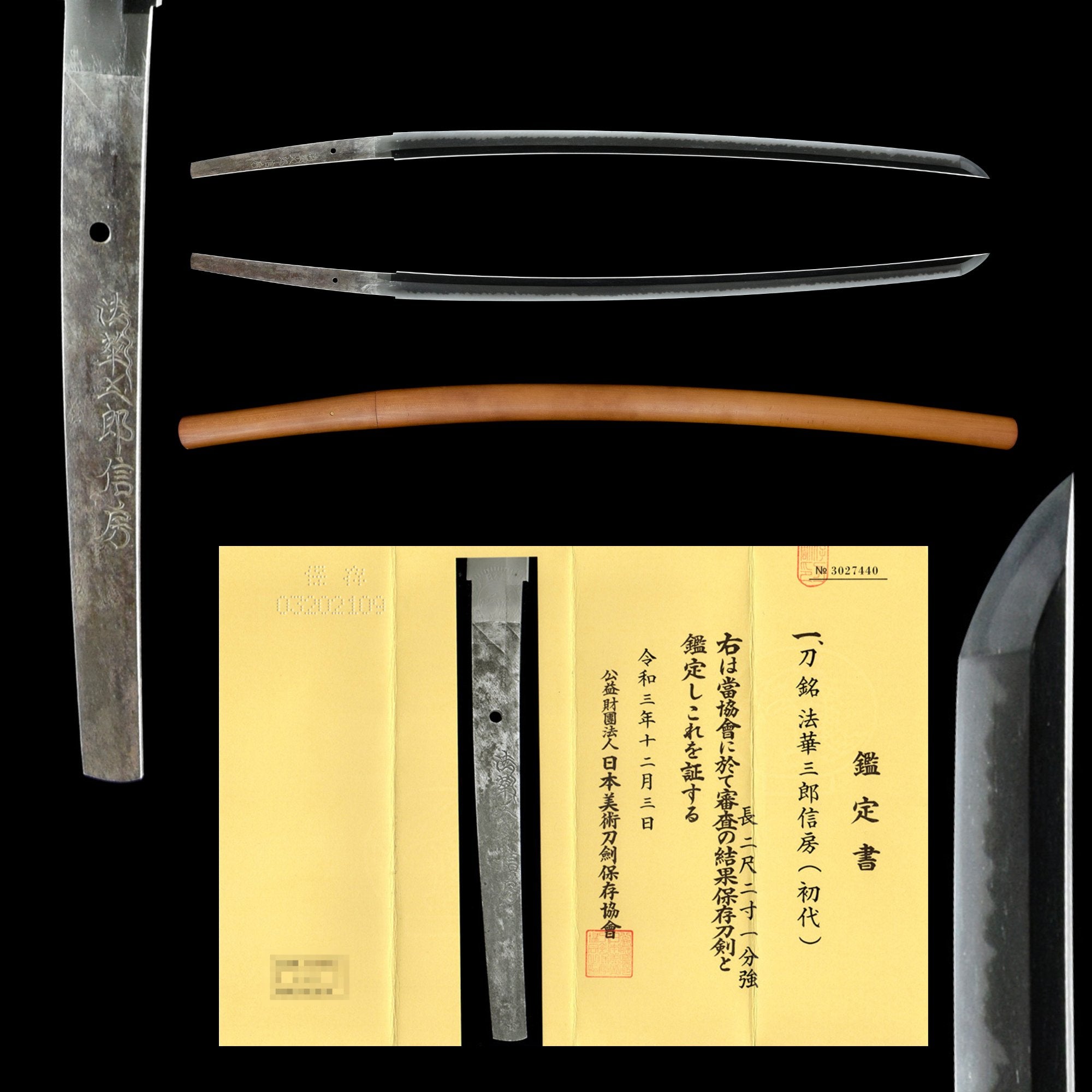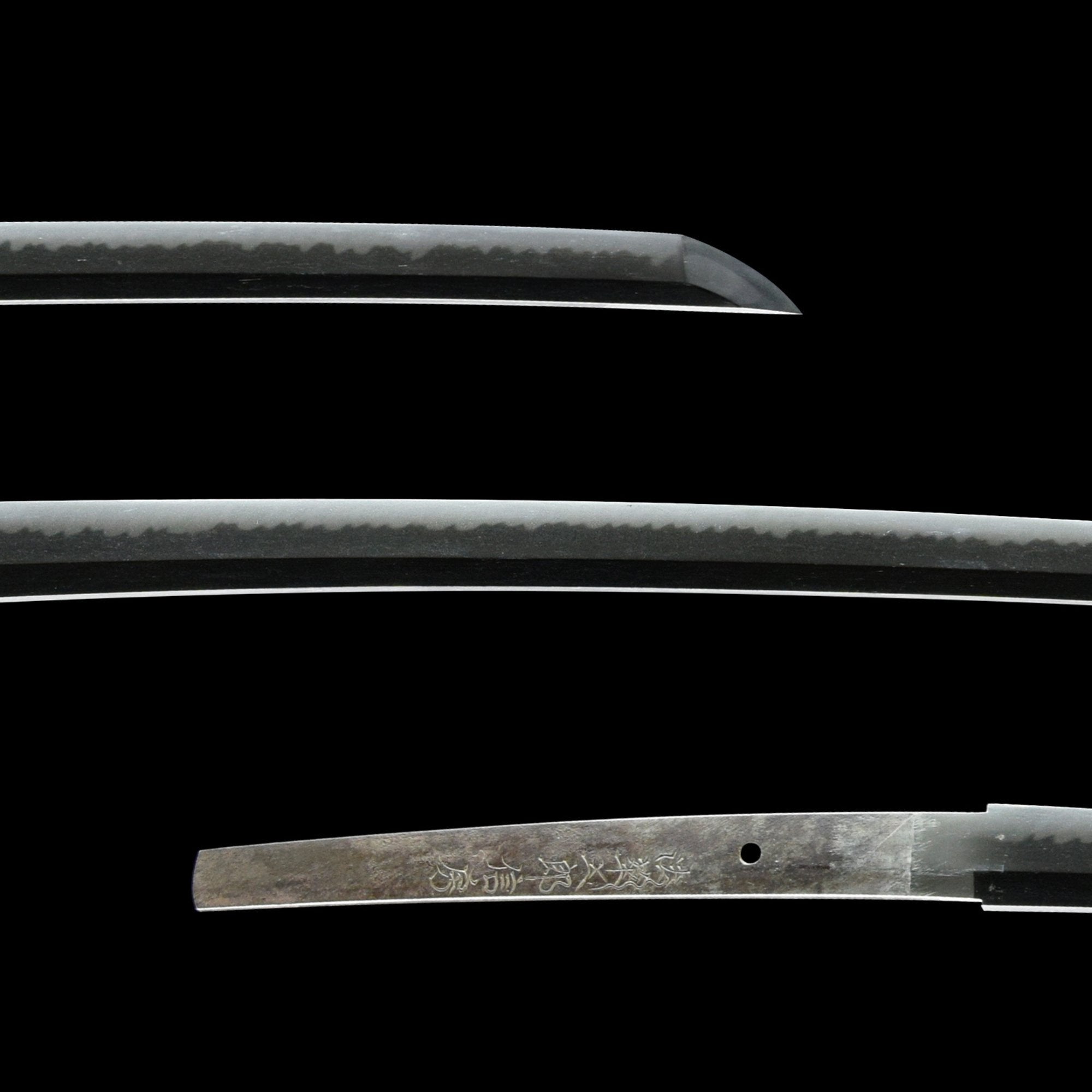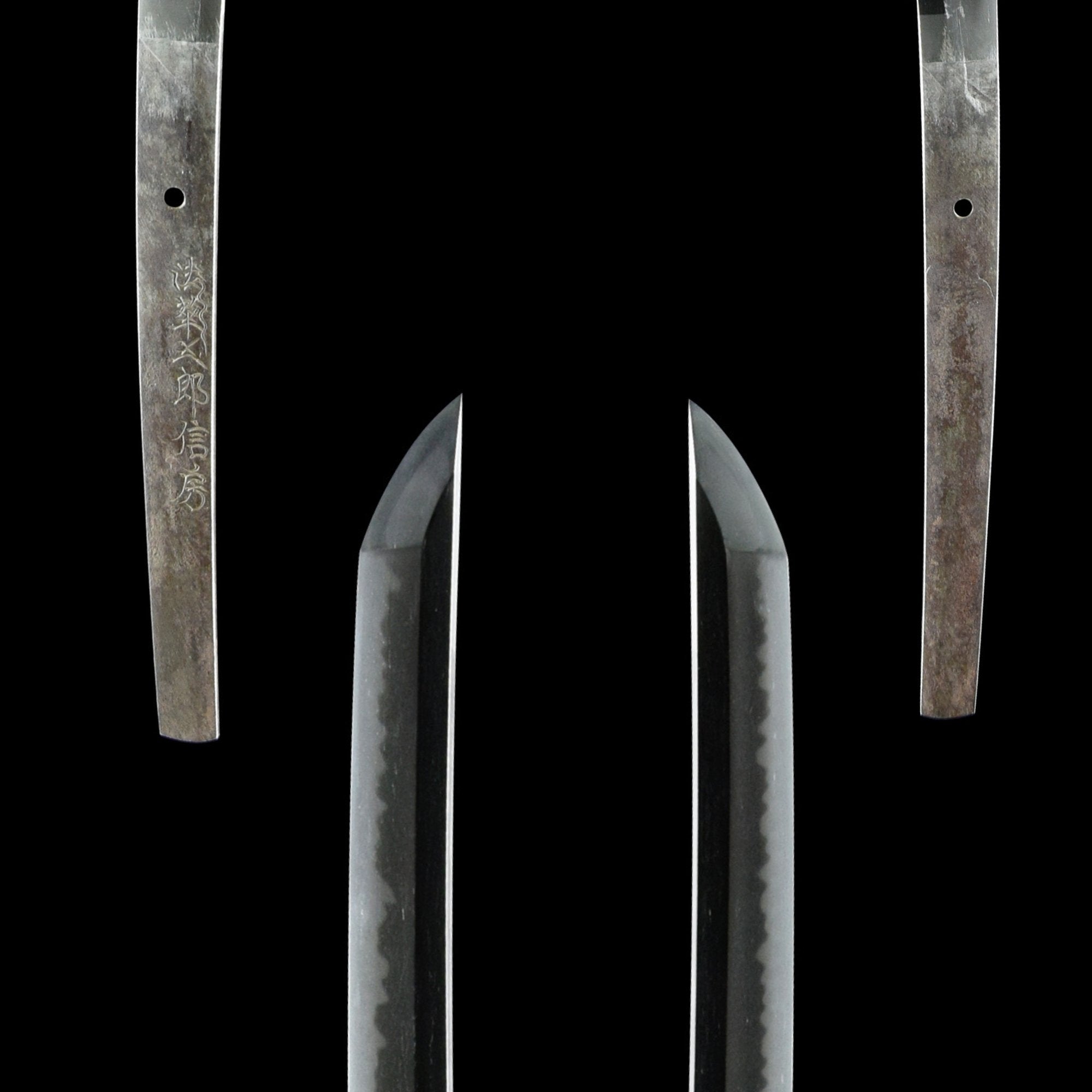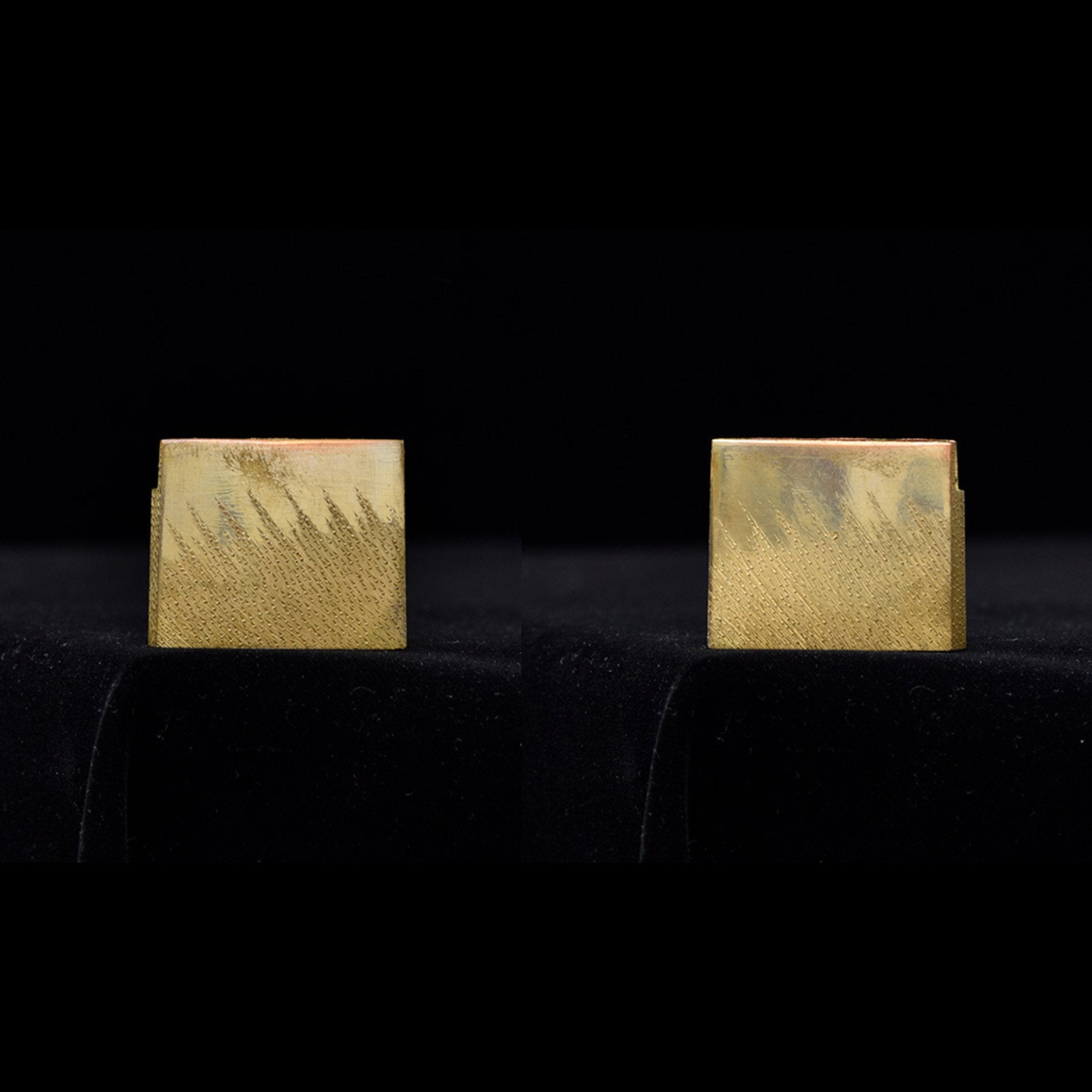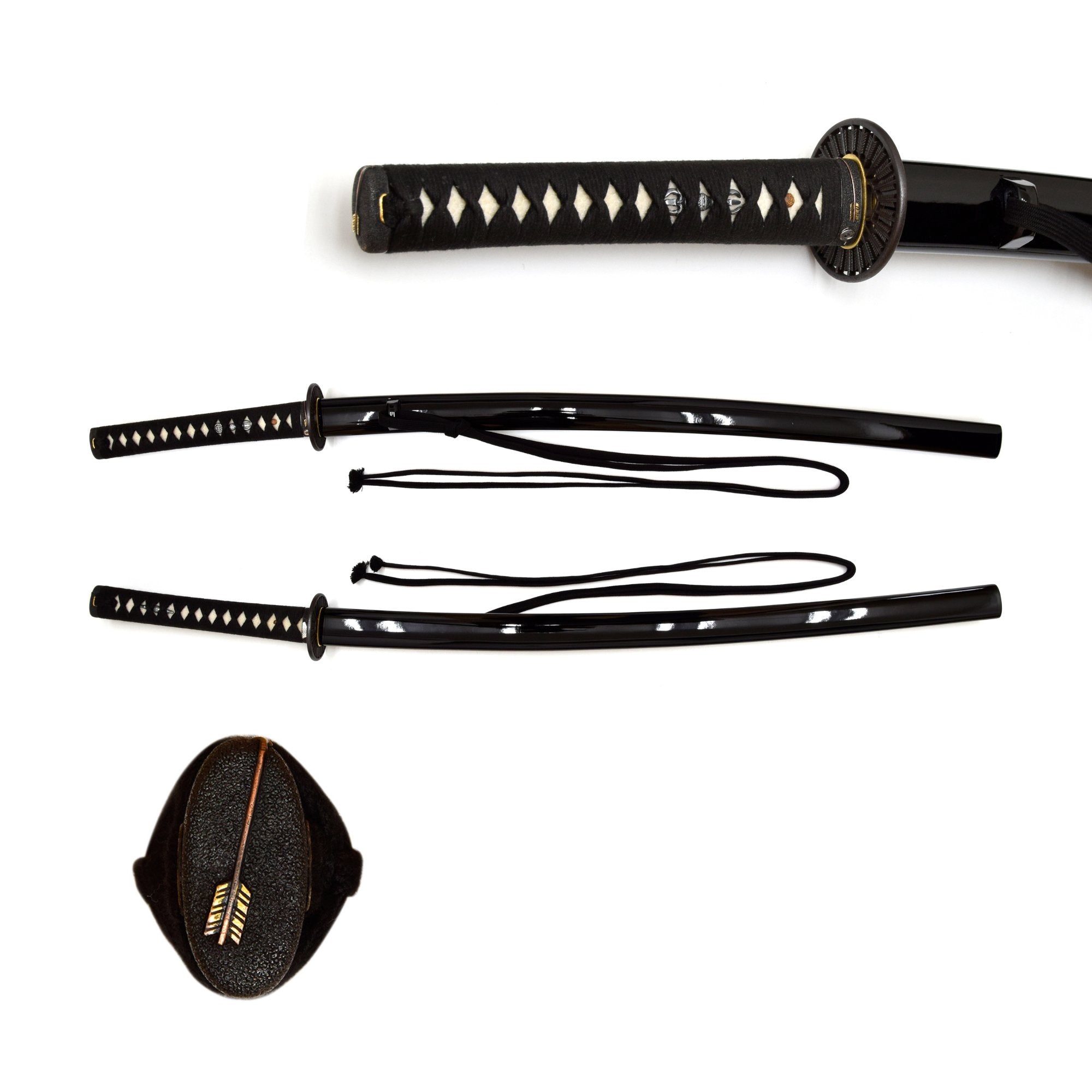Description
Authentic Nihontō Japanese Sword Katana Signed by
Hokke Saburo Nobufusa 法華三郎信房 NBTHK HOZON TOKEN Certificate
高橋昇 was born on May 15, 明治42年 (1909). 信房氏 is a renowned lineage of swordsmiths, known for their exceptional craftsmanship within the 仙台藩 (Sendai Domain). They trace their skills back to 山城大掾国包 (Yamashiro Daijo Kunitsutsumi), and the ninth generation 半蔵国包 (Hanzō Kunitsutsumi), who died in 宝歴13年 (1763). 信房, the seventh generation, inherited the Bizen-den style.
Initially named 景房 (Kagefusa), he later succeeded in reviving the Yamato-den Hōshō school style and took the name 信房 (Nobufusa). In 昭和39年 (1964), he won a prize for exhibiting a Yamato-den sword at the New Japanese Sword Art Exhibition. In December 昭和41年 (1966), he was designated as a holder of Important Intangible Cultural Property of sword-forging techniques by Miyagi Prefecture. In 昭和56年 (1981), he was recognized as Mukansa, the highest rank for contemporary swordsmiths. He is highly reputed for the sharpness of his swords and comes from a lineage of distinguished swordsmiths.
This sword features a well-proportioned width difference between the base and tip, with a slightly extended middle point. The shallow curvature makes it suitable for practical use, focusing on cutting effectiveness. The steel has a ko-itame mixed with mokume pattern, flowing towards the edge with attached ji-nie and chikei. The hamon is a bright, clear nioiguchi in the Aoe style, with a reversed gunome-midare pattern, mixed with gunome-choji. It has prominent ashi, visible kinsuji, and fine sunagashi. The boshi is straight with a rounded return, showcasing the high skills of the first-generation 法華三郎信房 (Hokke Saburō Nobufusa).
The accompanying koshirae was overseen by 町井勲 (Isao Machii) and is a practical koshirae. It is meticulously crafted with precise alignment of the handle and blade. When unsheathed and handled, the sword feels well-balanced with the center of gravity toward the hand, making it easy to handle. Do not miss this opportunity to acquire a fine sword by the first-generation 法華三郎宣房, complete with a practical koshirae supervised by 町井勲.
Bare weight: 764 grams.
Weight with koshirae and without saya: 1,005 grams.
Nihontō Information
| Name 名称 | 法華三郎信房(初代) - Hokke Saburo Nobufusa(First Gen) |
| Blade Length 刀長 | 二尺二寸一分四厘強 / 67.1 cm |
| Sori 反り | 四分九厘強 / 1.5 cm |
| Blade Width 元幅 | 31.3 mm |
| Blade Thickness 元重 | 7.2 mm |
| Tip Width 先幅 | 物打23.4 mm 横手位置22.2 mm |
| Tip Thickness 先重 | 物打6.0 mm 松葉位置5.5 mm |
| Mekugi-ana 目釘穴 | 1個 |
| Age 時代 | 昭和前期 The early period of Showa era (20th century) |
| Certificate 鑑定書 | 保存刀剣鑑定書(NBTHK HOZON TOKEN Certificate) |
| Registration 登録 | 昭和39年3月7日 大阪府登録 Registered on March 7, 1964 in Osaka Prefecture |
| Included 附属 | 白鞘 / 簡易継木 (Shirasaya Case / Simple Tsugiki) |
| 黒蝋塗鞘打刀拵(新調済) (Black Lacquered Saya Uchigatana Koshirae (Newly Made)) | |



